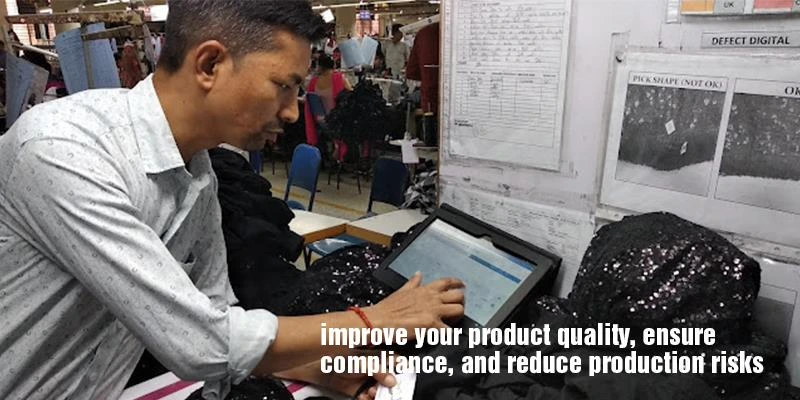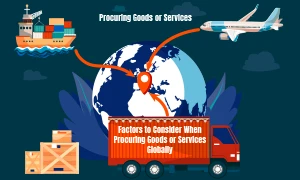
Mexico is rapidly emerging as a global hub for garment sourcing, attracting brands from around the world, especially from the United States. In recent years, U.S. fashion brands have increasingly shifted their sourcing strategies toward Mexico to reduce lead times, lower shipping costs, and ensure faster market entry. In 2023, Mexico held the title of the largest trading partner of the U.S., surpassing both Canada and China. However, with growing opportunities come new challenges, particularly in maintaining consistent product quality.
Quality control (QC) plays a crucial role in ensuring the success of the sourcing process. Without a reliable QC process, brands risk facing issues such as defective garments, inconsistent sizing, compliance failures, and costly returns.
In this blog, we will explore how to choose the right QC partner for garment sourcing in Mexico and the key factors that ensure product quality and long-term success.
Why Choosing the Right QC Partner Matters
It is crucial to select the right partner for quality control (QC) to maintain a brand's reputation and ensure customer satisfaction. In a competitive apparel market, customers expect consistent sizing, flawless stitching, and high-quality fabrics. A dependable QC partner ensures garments meet international standards and strengthens buyer confidence.
Without proper QC, brands risk defective products, high return rates, compliance failures, and shipment delays. These problems not only increase operational costs but also damage credibility and reduce customer loyalty. A strong QC process helps identify issues early and keeps production on track.
Key Challenges in Garment Sourcing in Mexico
Let's examine the unique challenges brands encounter when sourcing garments in Mexico and why the right partner makes all the difference.
1. Differences in Production Quality Standards
Garment manufacturing in Mexico exhibits significant regional variations, leading to disparities in production quality standards. While some factories offer high-end apparel capabilities, others may lack advanced technology or consistent inspection processes. To avoid quality inconsistencies, brands must carefully evaluate suppliers and rely on a QC partner that understands regional strengths and limitations.
2. Language and Communication Barriers
Effective communication is crucial in garment sourcing, but language barriers frequently lead to misunderstandings between brands and factories. For example, incorrectly translating fabric specifications can result in the use of the wrong material, or miscommunication about sizing charts may lead to an entire batch of garments being produced in the incorrect dimensions.
Similarly, misaligned expectations during design approvals, production updates, or inspection reports can cause costly errors and shipment delays. A QC team with bilingual capabilities and strong local relationships helps bridge these gaps, ensuring clear communication, accurate instructions, and smoother collaboration between brands and manufacturers.
3. Ensuring Regulatory Compliance
Brands sourcing from Mexico must comply with U.S. and international regulations, including labelling laws, safety standards, and environmental policies. Failure to meet these requirements can result in hefty penalties and shipment rejections.
For example:
- Incorrect or missing labelling (fibre content, care instructions, country of origin) can lead to U.S. Customs detaining or rejecting shipments.
- Non-compliance with safety standards, such as flammability regulations for children's clothing, may result in product recalls and fines.
- The use of restricted chemicals or non-sustainable dyes can violate environmental regulations, leading to penalties and supply chain disruptions.
Partnering with an experienced QC team ensures that every product meets labelling, safety, and environmental standards before leaving the factory, reducing the risk of compliance breaches and costly shipment rejections.
4. Managing Timelines and Avoiding Delays
Fast-changing fashion cycles and tight deadlines make time management a top priority. Without proper oversight, production delays can cascade into missed delivery dates, higher shipping costs, and strained client relationships. A proactive QC partner helps monitor timelines closely and resolves potential bottlenecks before they impact the supply chain.
Now that we understand the challenges, the next step is to identify the qualities that make a QC partner truly reliable and effective.
What to Look for in a QC Partner
Choosing the right quality control partner is about more than just inspections. It is about finding a team that understands your brand's unique needs, production goals, and quality expectations. Below are the key qualities to look for when selecting a QC partner for garment sourcing in Mexico.
1. Expertise in Garment Manufacturing
A dependable QC partner should specialize in apparel inspections rather than handling a wide range of products. Their technical expertise ensures that your garments meet global quality standards.
Key factors to look for:
-
Proven Expertise in Fabric Testing, Stitching Checks, and Fit Assessments
A reliable QC partner should have expertise in fabric testing to ensure durability and performance, conduct stitching inspections to detect defects, and perform fit assessments to confirm sizes meet brand specifications and customer expectations. -
Understanding of Seam Strength, Colour Fastness, and Finishing Quality
Your QC partner should test seam strength to ensure garments withstand regular use, conduct colour fastness testing to prevent fading or bleeding, and perform finishing quality checks to verify smooth edges, proper hems, secure buttons, aligned zippers, and overall product quality. -
Experience Handling Different Garment Types
Every garment category requires a tailored inspection approach. A reliable QC partner should have experience with casual wear, sportswear, luxury fashion, children's apparel, and fast fashion. While luxury garments require meticulous checks for fabric quality and flawless finishing, fast fashion demands efficient, high-volume inspections that do not compromise consistency.
2. Local Presence in Mexico
Having an on-ground QC team in Mexico offers unmatched advantages, especially when managing multiple suppliers and production hubs.
Why it matters:
- Faster factory visits, on-site inspections, and immediate issue resolution
- Direct communication with local suppliers for smooth coordination
- Access to regional supplier networks and better production insights
3. Experience with International Standards
Global apparel brands must comply with strict quality, safety, and labeling regulations. A QC partner experienced with international standards ensures smooth cross-border trade.
What to check for:
-
Knowledge of ISO guidelines, ASTM testing methods, and AQL inspection levels
A reliable QC partner should follow ISO quality standards and utilise ASTM-approved tests, such as fabric strength and colourfastness checks, while applying AQL inspection levels to control defects. For example, using AQL 2.5 ensures that only 2–3 defective items are present per 100 pieces, thereby maintaining consistent product quality. -
Familiarity with sustainability certifications and eco-friendly practices
With the increasing demand for sustainable fashion, a QC partner should be familiar with certifications such as OEKO-TEX for safe dyes, GOTS for organic fabrics, and WRAP for ethical manufacturing practices. For example, ensuring garments are OEKO-TEX certified guarantees they are free from harmful chemicals. -
Understanding of U.S. retailer requirements for labeling and compliance
U.S. retailers have strict rules on fibre content labels, care instructions, safety standards, and country-of-origin tags. For example, failing to meet CPSC flammability regulations for children's clothing can lead to shipment rejections or recalls. A QC partner ensures that garments meet these requirements before they are shipped from the factory.
4. Transparent Reporting & Technology Use
Modern QC relies on real-time monitoring and digital tools to track quality performance and improve accountability.
Best practices to expect:
-
Digital Inspection Reports with Detailed Defect Analysis
A reliable QC partner should provide digital inspection reports with images, defect classifications, and corrective action plans. For example, if 5% of a garment batch has loose seams or faulty stitching, the report highlights the affected pieces so that the factory can address the issues before the garments are shipped.
Tools like QIMA One, Inspectorio Sight, and Pro QC International help generate accurate reports and efficiently track inspection results. -
Real-Time Dashboards and Progress Updates
Modern QC partners provide real-time dashboards that enable brands to track inspections, production timelines, and quality performance at every stage. For instance, if a colourfastness test fails during inspection, brands receive instant alerts and can take immediate corrective action to avoid production delays. Platforms such as Inspectorio Rise, QIMA Dashboard, and ETQ Reliance provide live updates, ensuring better visibility throughout the sourcing process. -
Use of Technology for Faster Decision-Making
Technology-driven QC partners utilise AI-powered defect detection, mobile apps, and cloud-based reporting to expedite decision-making and resolve quality issues promptly. Inspectors can instantly upload defect photos, enabling brands to approve corrective actions promptly and prevent shipment delays.
Tools like Inspectorio Tracking, Qualtrax, and the QIMA Mobile App make quality monitoring smarter, faster, and more collaborative.
5. Flexibility & Customization
Every brand has unique quality needs, so a strong QC partner must adapt their approach to suit your products and market positioning.
Things to prioritize:
-
Custom QC Plans Tailored to Your Garment Type and Production Volume
A reliable QC partner should create customized inspection plans tailored to your garment type, fabric quality, and order size. For example, luxury apparel may require multiple inspection stages and detailed finishing checks, while high-volume T-shirt production may need bulk sampling and faster inspection methods to maintain efficiency. -
Ability to Handle Diverse Garment Categories
Your QC partner should be experienced in managing various apparel segments, including sportswear, fast fashion, luxury clothing, and children's apparel. For instance, sportswear inspections focus on seam strength, flexibility, and fabric breathability, whereas luxury garments demand meticulous checks for stitching precision, embellishment quality, and flawless finishing. -
Scalable Solutions That Grow with Your Sourcing Needs
As your business expands, your QC partner should offer scalable inspection solutions to match increasing production volumes and new product lines. For example, if you start with 2,000 garments per month and scale up to 10,000 or more, your QC partner should be able to handle additional inspections seamlessly without compromising quality standards.
Once you identify a QC partner with these qualities, the next step is to understand how to evaluate them effectively and initiate a smooth onboarding process.
How to Choose the Right QC Partner- A step-by-step process
Selecting the right quality control (QC) partner for garment sourcing in Mexico requires a structured approach. Following these steps will help you choose a partner who aligns with your brand goals, quality standards, and sourcing strategy.
Step 1: Define Your Quality Expectations
Before approaching a QC partner, establish clear inspection standards and performance benchmarks to ensure a consistent approach to quality control.
- Identify your product-specific quality requirements, such as fabric testing, stitching accuracy, and sizing tolerances.
- Set acceptable quality levels (AQLs) to define defect limits and inspection thresholds.
- Align these standards with U.S. retailer and international compliance requirements.
Step 2: Evaluate Experience & Case Studies
A QC partner's track record speaks volumes about their reliability and capabilities.
- Always review case studies, client testimonials, and previous inspection reports to assess the quality of their performance. For example, a QC partner that has successfully managed inspections for high-end denim brands or fast-fashion collections demonstrates their ability to handle similar garment categories effectively.
- Also, check their experience with products similar to yours, such as sportswear, luxury apparel, or children's clothing, to ensure they understand the unique inspection requirements specific to your product category.
- Prefer partners with proven success stories in Mexico's apparel industry, as local expertise provides better insights into regional suppliers, compliance practices, and factory standards.
Step 3: Check Factory Network & Local Relationships
An established QC partner with a strong local presence offers better efficiency and faster resolutions.
- Ensure they have direct access to top-tier factories and trusted suppliers, as this can significantly improve inspection efficiency and production quality.
- For example, a QC partner with established connections in key manufacturing hubs, such as Tijuana, Monterrey, and Mexico City, can secure priority inspections and expedite approvals during peak production periods.
- Additionally, strong relationships with regional manufacturers enable the QC team to resolve disputes quickly, address defects on-site, and keep production timelines on track without costly delays.
Step 4: Ask About Reporting Systems
Transparent reporting is essential for tracking quality and accountability.
- Select a QC partner that provides digital inspection reports with clear defect classifications, images, and detailed analysis to identify issues accurately.
- For example, if 5% of a batch fails a stitching quality check, a digital report should highlight the defective garments, enabling the factory to correct problems before shipment.
- Look for QC partners that provide real-time dashboards and progress updates, allowing the brands to monitor inspections and production status in real-time.
- Tools like QIMA One, Inspectorio Sight, and ETQ Reliance are commonly used to deliver real-time insights and maintain complete visibility.
- Ensure that the QC partner provides corrective action plans whenever defects are detected, so that issues are resolved quickly without delaying timelines.
Step 5: Test with a Pilot Project
Before committing to a long-term solution, start with a small-scale trial to evaluate its performance.
- Assign a limited production batch for inspection to test their reporting accuracy, defect detection skills, and turnaround time.
- For example, you can begin with 500 garments to assess how well the QC team identifies stitching issues, fabric defects, or labelling errors.
- Monitor their responsiveness, problem-solving approach, and communication efficiency during the process. Use the pilot results to confidently decide whether to scale the partnership for larger production volumes.
By following these steps, you can confidently choose a QC partner that safeguards product quality, ensures compliance, and builds stronger supplier relationships in Mexico.
Benefits of Partnering with the Right QC Company
Partnering with a reliable quality control (QC) company can significantly improve your garment sourcing experience in Mexico. The right partner helps you maintain product consistency, streamline operations, and protect your brand reputation.
1. Reduced Risks of Defective Products and Delays
A dedicated QC partner ensures every garment meets your quality and compliance standards. Through regular inspections, fabric testing, and production monitoring, they identify defects early and help prevent costly reworks or shipment delays.
2. Improved Supplier Relationships and Communication
Strong QC partners act as a bridge between your brand and local manufacturers. Their on-ground presence and bilingual teams enable seamless communication, helping resolve issues quickly and maintain healthy, long-term supplier relationships.
3. Better Compliance with U.S. and International Standards
Compliance is critical when sourcing garments for global markets. An experienced QC company ensures products meet U.S. retailer guidelines, ISO certifications, AQL levels, and other international quality standards, minimizing the risk of penalties or rejected shipments.
4. Higher Customer Satisfaction and Brand Reputation
Consistently delivering high-quality garments strengthens your brand image and increases customer loyalty. Satisfied customers are less likely to return products, resulting in higher retention rates and a more substantial market presence.
With these benefits in mind, the final step is choosing a QC partner that aligns with your sourcing goals and ensures long-term success.
Where to Find the Right QC Partner for Garment Sourcing in Mexico
Finding the right quality control (QC) partner is just as important as choosing the right supplier when sourcing garments in Mexico. A dependable apparel QC partner ensures your products meet international quality standards, helps manage supplier relationships, and minimizes risks during production. Here are the best ways to find a reliable QC partner:
1. Online Directories and B2B Platforms
Websites like MakersValley, GlobalSources, and Alibaba feature verified QC service providers and apparel manufacturers in Mexico. Searching for terms like "QC partners in Mexico" or "quality inspection services for garments in Mexico" can help you discover trusted companies.
2. Trade Shows and Fashion Expos
Events like Intermoda (Guadalajara) and ModaPremio bring together manufacturers, QC providers, and sourcing experts. Attending these expos enables you to network directly with potential QC partners, gain insight into their inspection processes, and discuss customized quality solutions tailored to your needs.
3. Industry Associations and Networks
Organizations like CANAINTEX (National Chamber of the Textile Industry) often maintain directories of trusted QC providers and audited apparel manufacturers. Partnering with industry associations helps ensure compliance with international standards and gives you access to vetted service providers.
4. Local Sourcing Agents
Hiring a local sourcing agent can make the search easier. These professionals can:
- Identify reliable QC partners based on your production needs
- Evaluate inspection capabilities and reporting systems
- Ensure smooth coordination between manufacturers and QC teams.
5. Visiting Key Garment Manufacturing Hubs
Cities like Tijuana, Monterrey, and Mexico City are home to major apparel production facilities and QC service providers. Visiting these hubs allows you to assess inspection processes, meet QC teams in person, and establish stronger working relationships.
Partner with SixMexico to secure your garment sourcing process in Mexico
At SixMexico, we specialize in end-to-end garment quality control services designed to help brands source with confidence in Mexico. From on-ground inspections and real-time reporting to supplier vetting and compliance checks, we ensure your products meet the highest quality standards, every time.
Contact SixMexico today to discuss your QC needs and discover how we can help you build a reliable, efficient, and risk-free supply chain.
Frequently Asked Questions (FAQs)
- Fabric testing for durability and color fastness
- Stitching and seam checks for strength and consistency
- Fit assessments to ensure correct sizing
- Labeling, packaging, and finishing inspections

